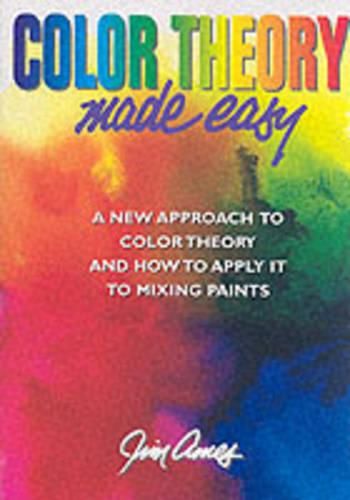Readings Newsletter
Become a Readings Member to make your shopping experience even easier.
Sign in or sign up for free!
You’re not far away from qualifying for FREE standard shipping within Australia
You’ve qualified for FREE standard shipping within Australia
The cart is loading…






Traditional color theory can be confusing to artists, especially when they try to use inaccurate color wheels as guides to mixing their colors. Now, Color Theory Made Easy presents an alternative approach that cuts through the tangle of established but contradictory concepts that gives artists a universal theory that really applies to their work. Most artists have been taught that red, blue, and yellow are the primary colors hues that cannot be created from any combination of other colors. However, as a result of years of study, author and artist Jim Ames has concluded that the true primary colors are cyan (a greenish blue), magenta (a violet red), and a yellow that does not learn toward either cyan or magenta. In Color Theory Made Easy, Ames explains the importance of these three colors as the basis for all our thinking about color. Using friendly, clear language and colorful diagrams, the author lays the foundation in Chapter 1 for applying his color theory in art. He shows that all colors in nature are composed of varying percentages of cyan, magenta, and yellow. Chapter 2 builds on this with a survey of the pigment colors artists actually use. Here the author offers an essential education concerning paint selection, and he lists currently available tube colors that are the most accurate in terms of the true primaries. The final chapter explores color mixing principles based on cyan, magenta, and yellow, and applies these principles through a series of watercolor demonstrations. In this illuminating book, Jim Ames has broken new ground and given us a workable color theory that is both simple and indispensable.
$9.00 standard shipping within Australia
FREE standard shipping within Australia for orders over $100.00
Express & International shipping calculated at checkout
Traditional color theory can be confusing to artists, especially when they try to use inaccurate color wheels as guides to mixing their colors. Now, Color Theory Made Easy presents an alternative approach that cuts through the tangle of established but contradictory concepts that gives artists a universal theory that really applies to their work. Most artists have been taught that red, blue, and yellow are the primary colors hues that cannot be created from any combination of other colors. However, as a result of years of study, author and artist Jim Ames has concluded that the true primary colors are cyan (a greenish blue), magenta (a violet red), and a yellow that does not learn toward either cyan or magenta. In Color Theory Made Easy, Ames explains the importance of these three colors as the basis for all our thinking about color. Using friendly, clear language and colorful diagrams, the author lays the foundation in Chapter 1 for applying his color theory in art. He shows that all colors in nature are composed of varying percentages of cyan, magenta, and yellow. Chapter 2 builds on this with a survey of the pigment colors artists actually use. Here the author offers an essential education concerning paint selection, and he lists currently available tube colors that are the most accurate in terms of the true primaries. The final chapter explores color mixing principles based on cyan, magenta, and yellow, and applies these principles through a series of watercolor demonstrations. In this illuminating book, Jim Ames has broken new ground and given us a workable color theory that is both simple and indispensable.